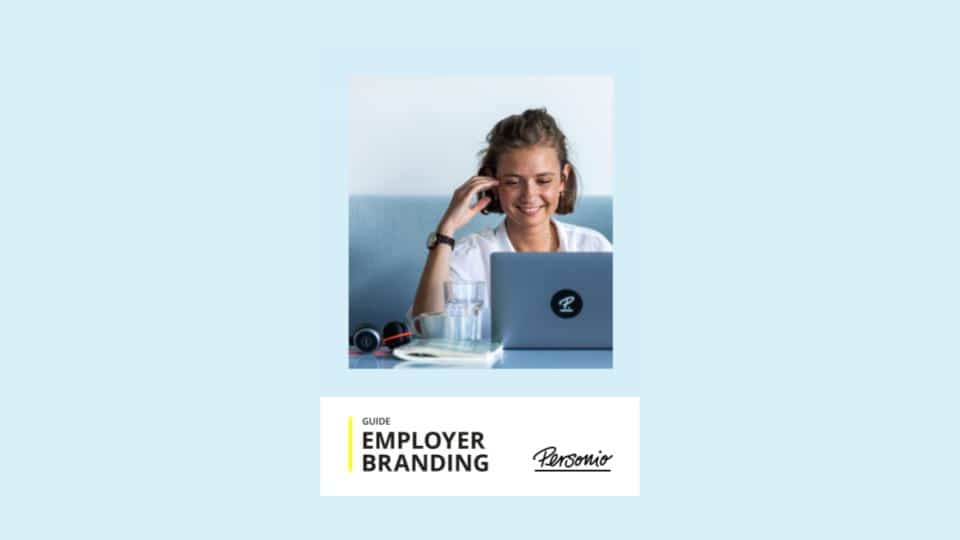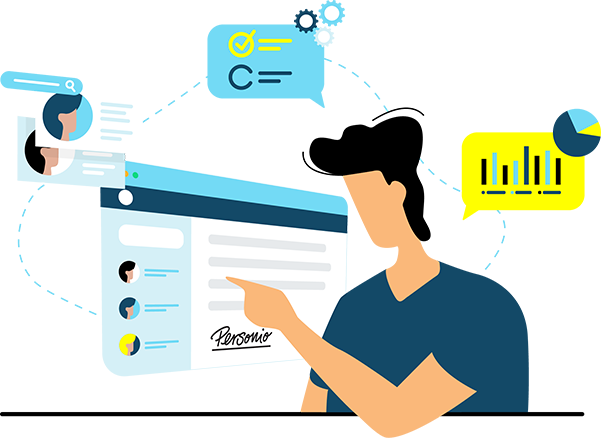1. December 2022
Employer Branding: Best Practice

When CEOs hear the term ‘employer branding’, visions of expensive off-site workshops or advertising campaigns quickly come to mind. However, the best employer branding comes from a resource you already have: your employees.
According to a study carried out by LinkedIn, 83% of companies agree that an employer’s brand has a significant impact on the talent a company can recruit. A decent budget can improve recruiting results. But employer branding, no matter how well designed in theory, can only really take full effect when it is lived.
Here are some inexpensive and inspiring examples of best-practice employer branding.
Do you find that all the admin you have to get through barely leaves you any time to look after your employer branding?
With Personio, you can automate your processes and make room for value-adding HR work. Find out how.
Identify What Makes Your Corporate Culture Unique
Your employer brand is made up of much more than your job advertisements and the careers page of your website.
Candidates want to get an idea of your corporate culture, the office, the candidate experience, and the day-to-day working routine (and see pictures!).
Accordingly, the first step towards an effective employer brand is a well-defined and well-thought-out employer value proposition (EVP). This gives an insight into the daily working routine that a new employee can expect – in addition to the work itself. In marketing this might be referred to as: ‘What’s in it for me?’ Here, the focus is on the attractiveness of an employer beyond the salary and benefits they offer.
The things you do differently are the things that make you special.
Highlight the things that your company does differently.
Employer Branding: A Step by Step Guide

Give candidates all the right reasons to work for your company by presentingyourself as an attractive employer. This guide will assist you.
Download the Guide HereShare Authentic, Employee-Generated Content
Encourage your employees to create content themselves. Here are five examples of how easy this employer branding strategy can be:
1. Be active on Glassdoor
Encourage your employees (and keep reminding them) to share their experiences of the application process and of working at your company. Both channels are an important source of information for applicants. So – start a conversation with (ex-)employees or applicants and post your own comments!
Respond to all comments, no matter whether they are positive or negative. By doing so, you can show that your employees, applicants, and your employer brand are very important to you. Ideally, these answers should come from the CEO or a department head, but an answer from the hiring manager or HR manager is fine too.
2. Include more than just job advertisements on the careers page of your website
The colleagues, the office, the city: An attractive new position is made up of more than just a job advertisement. Show what working at your company is all about.
Hochbahn Hamburg uses short videos to show what their employees value about their jobs and, in doing so, manages to convey the feeling: ‘Wow, that actually is a great job – who’d have thought it.’ This is accompanied by a poster campaign throughout the city.
Another example of best-practice employer branding is Runtastic. Their careers page shows everything that a job at Runtastic has to offer, the values the company lives by, and why one would want to move to Linz (!) of all places.
Smart Student offers a great employer branding example that shows how to attract student trainees and advertise your company at the same time. In this partnership, companies give their student trainees a Smart car with the company logo on it. The students then have a greater incentive to work for you, while also becoming a mobile billboard for your company.
When it comes to the skilled trades, target groups are hard to reach online. So Alba Burger resorted to a slightly different employer branding strategy. They drove a branded burger van from building site to building site, handing out burgers to the construction workers – and thus establishing initial contact with potential new employees.
Ask your employees what they like most about their job. It could be joint events, modern technologies, or the mission of the company.
3. Video Is Becoming Increasingly Important
The video collaboration start-up BlueJeans Network offers another example of best-practice employer branding in terms of the use of video: Before the interview process begins, the hiring team creates a personal video message explaining what working in the department is like. This not only shows how their product works but also gives candidates the opportunity to get to know their potential team in advance.
Nowadays you don’t need a cameraman or editor to make a team video. A smartphone or computer is quite enough to shoot a welcome video that is both authentic and personal.
Even if one or another colleague has to be convinced first, try it – it’s worth it.
4. Encourage Your Employees to Be Themselves. At Work. And Then Share It.
TripAdvisor has set up a Facebook group and a Twitter account specifically to present their corporate culture and to keep people who have a fundamental interest in working there up to date.
Instead of the typical job advertisements, there are posts about successful projects, amusing initiatives (bring your dog to work), and fun competitions among colleagues.
Because this content shows what makes a workplace special, it is often shared and helps to reach passive candidates. At the same time, you build up a pool of talent without having to introduce or develop software.
5. Start a Blog That Takes Readers Behind the Scenes at Your Business
Southwest Airlines, for example, launched a community blog in 2006 that offers candidates a glimpse behind the corporate facade and allows them to interact with employees. Today, they are among the most active brands on Facebook and Twitter, where they regularly chat online with candidates, share stories from employees, and focus on their exceptionally customer-oriented corporate culture.
Not every company has the resources of Southwest Airlines, but this can work on a smaller scale as well. On the Personio blog, for example, we use short interviews to introduce our employees in the People @ Personio series. We always receive positive feedback about this from job applicants when they come in for an interview. The effort involved is limited, just one or two hours per interview (including coordination, transcription, and the creation of the post on the website).
Some managers may argue – partially correctly – that these authentic ‘a-day-in-the-life-of’ portrayals could put some candidates off applying.
If it works, it will put some people off.
That’s perfectly alright. Because a good employer brand not only attracts the right people, it also prevents unsuitable candidates from applying. But they are exactly the ones who would be weeded out anyway when it comes to the question of cultural fit.
Employer Branding: Best Practice

Daunting admin work keeps you from focussing on important HR topics like the EVP? Don’t worry, wehave a solution. Personio automates recurring HR tasks and saves you time.
Book Your Demo Today
